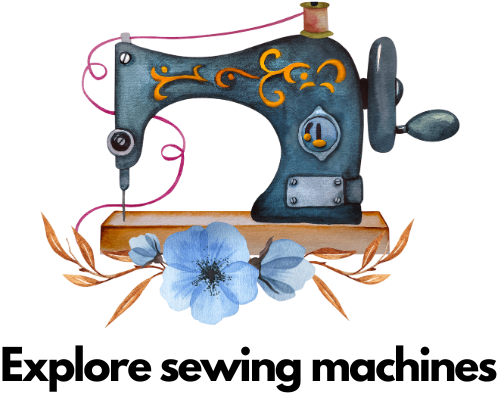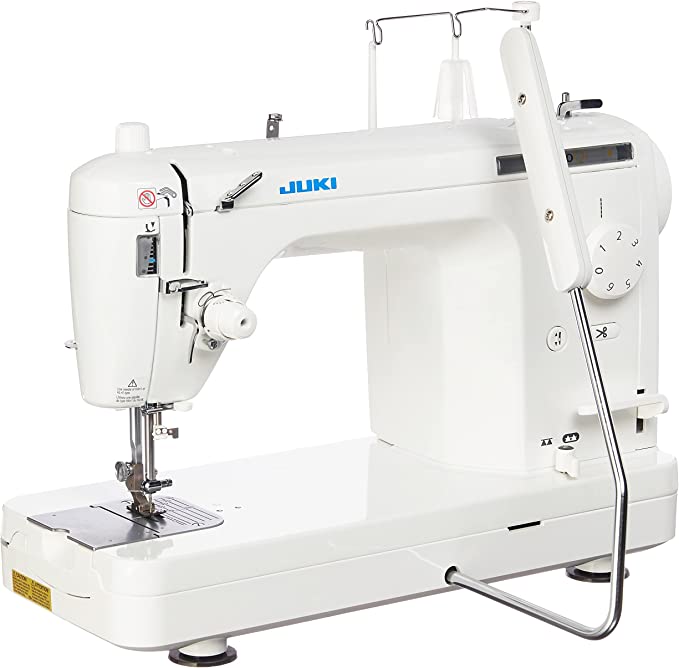As an Amazon Associate, I earn from qualifying purchases
CHECK LATEST PRICE ON AMAZON
Juki TL-2010Q – Quilting and Sewing with Confidence
In this text, we will delve into a detailed description of all the most significant features of the Juki TL-2010Q machine, taking into account the ratings of users. In this way, we will bring you closer to the experiences of people who have already used or are currently using this machine, highlighting its advantages, disadvantages, and overall impression.
Exploring the High-Speed Sewing of Juki TL-2010Q: A Critical Review
The Juki TL-2010Q sewing machine has gained recognition among quilting enthusiasts for its high-speed sewing capabilities. Let’s delve into the eight features of this function while considering the experiences of sewists who have tested and used this machine.
High-Speed Sewing key features:
- Rapid Stitching: The TL-2010Q’s high-speed sewing allows for quick completion of quilting projects.
- Efficient Time Usage: With its fast sewing speed, users can accomplish more in less time.
- Stitch Accuracy: Despite its speed, this machine delivers precise and consistent stitch quality.
- Multiple Fabric Layers: The TL-2010Q handles multiple layers of fabric with ease, ideal for quilting.
- Extended Sewing Table: Its spacious work area provides ample room for large quilting projects.
- Smooth Fabric Handling: The advanced feed mechanism ensures smooth and even fabric feeding.
- Noise Reduction: The TL-2010Q operates quietly, minimizing noise distractions during quilting sessions.
- Reliable Performance: This machine consistently delivers reliable results for a satisfying quilting experience.
Sewists who have utilized the TL-2010Q’s high-speed sewing feature have praised its time-saving benefits, enabling them to complete quilts more efficiently. The ability to handle multiple layers of fabric and the smooth fabric handling have contributed to positive quilting experiences.
However, it is important to address some cons that have been raised by users. Firstly, the high-speed sewing may pose a challenge for sewists who are not accustomed to fast-paced stitching, requiring an adjustment period. Additionally, the TL-2010Q’s high-speed feature may not be suitable for beginners or those who prefer a slower sewing rhythm.
In summary, the Juki TL-2010Q’s high-speed sewing function offers advantages such as time efficiency, accurate stitching, and fabric handling. While the cons of a potential learning curve and limited suitability exist, they should be considered based on individual sewing preferences and skill levels. The TL-2010Q opens up possibilities for efficient quilting, but users should be mindful of their comfort and experience level with high-speed stitching.
Automatic Thread Trimming Feature of Juki TL-2010Q
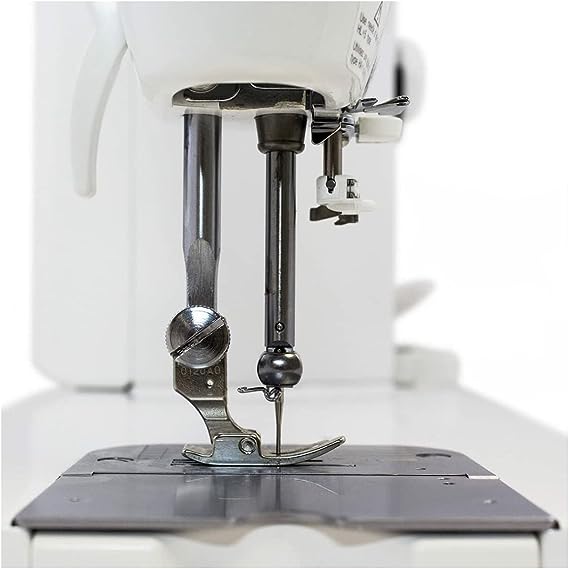
The Juki TL-2010Q is renowned for its automatic thread trimming feature, a valuable asset for quilting enthusiasts. Based on the experiences of sewists who have tested and used the machine, let’s explore the key features of this function and highlighting the precautions to ensure optimal performance.
Automatic Thread Trimming Key Features:
- Time-saving Convenience: The TL-2010Q’s automatic thread trimming saves valuable sewing time.
- Neat and Tidy Finishes: The machine cuts the thread precisely, resulting in clean and professional-looking stitches.
- Workflow Efficiency: Automatic thread trimming minimizes interruptions, enhancing productivity during quilting projects
- User-Friendly Operation: It is crucial to follow the manufacturer’s guidelines for activating and adjusting the feature.
- Thread Waste Reduction: Automatic trimming minimizes thread consumption, resulting in more efficient quilting.
- Attention to Detail: Ensuring correct tension settings and adequate thread clearance is essential for optimal performance.
- Minimized Thread Tangling: The automatic thread trimming feature reduces the risk of tangled threads during sewing.
- Customizable Trimming Options: The TL-2010Q allows users to adjust the thread trimming length to suit their needs.
- Consideration for Fabric Type: Thick or delicate fabrics may require adjustments to prevent fraying or damage.
- Regular Maintenance: Routine cleaning and lubrication are necessary to maintain smooth operation and prevent thread buildup.
While the automatic thread trimming feature offers several advantages, it is important to address potential concerns.
Considerations:
Firstly, some sewists have reported occasional fraying issues when the machine cuts the thread too close to the fabric. Secondly, user adjustments and fine-tuning may be required to achieve optimal performance, emphasizing the need for proper understanding and utilization of the feature.
In conclusion, the automatic thread trimming feature of the Juki TL-2010Q presents undeniable benefits, including time-saving convenience, neat finishes, and improved workflow.
However, careful attention to guidelines, fabric type, and regular maintenance are crucial to avoid potential fraying issues and optimize the feature’s functionality, which is fact for all machines and it’s important to note. Neglecting maintenance, ignoring instructions, using improper materials, and exceeding skill level may cause machine issues and user dissatisfaction.
By considering these factors, users can harness the full potential of the TL-2010Q’s automatic thread trimming feature for their quilting endeavors.
Juki TL-2010Q – Large work area
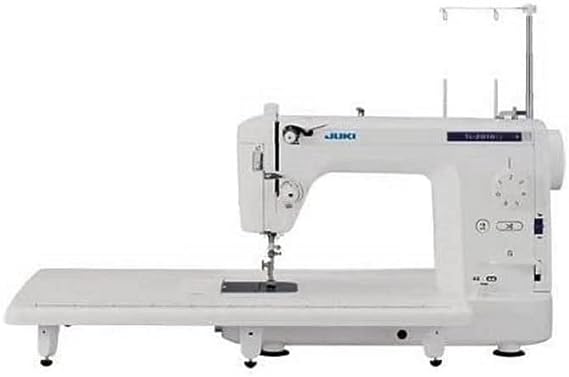
The Juki TL-2010Q boasts a spacious and generous work area, providing ample room for quilting enthusiasts to bring their creative visions to life. Sewists who have tested this machine praise its large work area for its convenience and versatility. However, it’s important to exercise caution with this feature to ensure optimal performance. Here are the key advantages and considerations:
Advantages:
- Ample Space: The large work area allows for comfortable maneuvering and handling of quilting projects.
- Versatile Quilting: The spacious surface accommodates larger quilts and intricate designs with ease.
- Improved Visibility: Sewists appreciate the clear line of sight, facilitating precise stitching and quilting.
- Enhanced Creativity: The expansive workspace inspires sewists to explore new techniques and designs.
- Convenient Handling: The larger area provides more stability and control during quilting sessions.
Drawbacks:
- Storage Space: The size of the machine may require additional storage considerations in smaller sewing spaces.
- Portability Concerns: The larger dimensions can make it less portable for on-the-go sewing projects.
To ensure the best functioning of the large work area, sewists should be mindful of their workspace limitations and plan for adequate storage solutions. By carefully considering the available space and portability requirements, users can maximize the benefits of the Juki TL-2010Q’s large work area while minimizing any potential drawbacks.
Smooth and Steady Stitches: Exploring the Even Feed Mechanism of Juki TL-2010Q
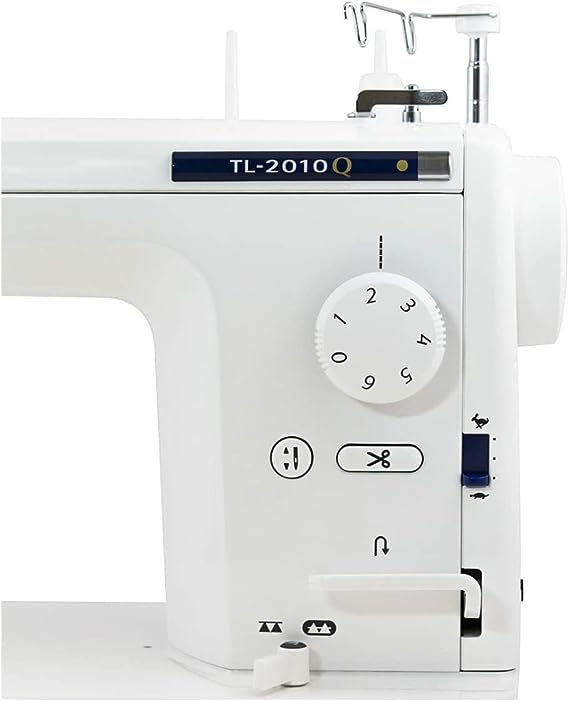
The Juki TL-2010Q quilting machine boasts an impressive Even Feed Mechanism, highly regarded by experienced sewists for its ability to handle various fabrics and quilting projects. While this feature offers significant advantages, it requires careful attention to ensure optimal performance. Let’s delve into the advantages and considerations of the Even Feed Mechanism:
Advantages:
- Precise Fabric Handling: The Even Feed Mechanism ensures even feeding of fabric layers, reducing slippage.
- Consistent Stitching: With improved fabric control, this feature promotes precise and uniform stitches.
- Ideal for Thick Fabrics: It effectively handles thick and bulky materials, making it suitable for quilting.
- Quilting Perfection: The mechanism prevents puckering and distortion, resulting in professional-quality quilts.
- Versatility: The Even Feed Mechanism accommodates various fabrics, from delicate silk to sturdy denim.
Considerations:
- Attachment Compatibility: Users must ensure compatible presser feet and accessories for optimal performance.
- Adjustment Precision: Proper adjustment of the feed dog height and presser foot pressure is crucial.
While the Even Feed Mechanism offers remarkable benefits, sewists should exercise caution regarding attachment compatibility. It’s essential to select presser feet and accessories that work seamlessly with this mechanism to avoid potential issues. Additionally, achieving optimal performance requires precise adjustment of the feed dog height and presser foot pressure, factors that may take some practice to master.
The experiences of sewists who have tested the Juki TL-2010Q’s Even Feed Mechanism have been largely positive, with praises for its ability to handle various fabrics and deliver consistent stitches. However, users should be mindful of attachment compatibility and take the time to make accurate adjustments for the best results. By doing so, quilting enthusiasts can harness the power of the Even Feed Mechanism to achieve flawless and professional-looking quilts.
Fine-Tuning Perfection: Unraveling the Adjustable Stitch Length of Juki TL-2010Q
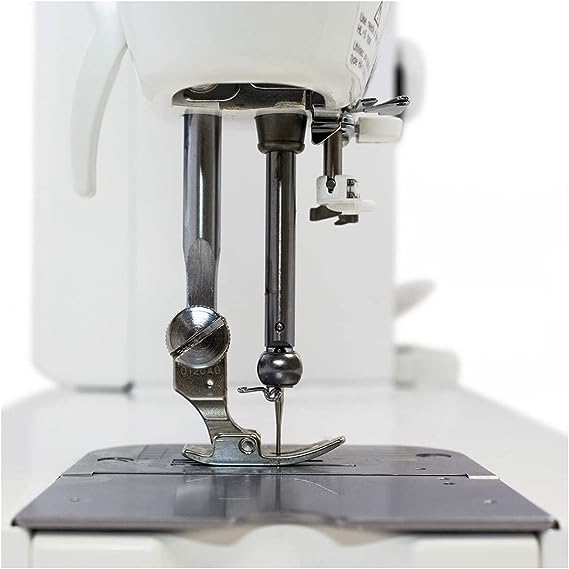
The Juki TL-2010Q quilting machine offers an adjustable stitch length feature that allows sewists to customize their stitches according to their project requirements. While this feature provides flexibility and creativity, it requires careful consideration to ensure optimal results. Let’s explore the advantages and considerations of the Adjustable Stitch Length:
Advantages:
- Versatile Stitch Options: Users can select from a wide range of stitch lengths, providing versatility in their sewing projects. Care should be taken when transitioning between drastically different stitch lengths to maintain consistent tension and stitch quality.
- Precision Control: The adjustable feature allows for precise control over the length of each stitch, ensuring meticulous results. Users should pay attention to the desired stitch length and make adjustments accordingly for accurate and uniform stitching.
- Quilting Adaptability: Seamlessly transition from long basting stitches to shorter decorative stitches for quilting projects. Users should be mindful of the fabric thickness and adjust the stitch length accordingly to prevent puckering or uneven stitches.
- Personalized Finishing: Customize stitch length for different fabric types, providing a professional and tailored finish. Careful consideration of the fabric type and thickness will ensure the stitch length complements the fabric without causing distortion or tension issues.
- Creative Expression: The adjustable feature encourages experimentation with stitch lengths, allowing for unique and custom designs. Users should test stitch lengths on scrap fabric before applying them to their main project to ensure the desired effect is achieved.
- Enhanced Detailing: Fine-tuning stitch length enables intricate detailing and embellishments on fabric and quilted projects. Users should be cautious when working with delicate or intricate fabrics to avoid causing damage or distortion.
- Professional Results: Achieve consistent stitch lengths for a polished and high-quality appearance. Regular maintenance of the machine and periodic calibration of the stitch length settings will help maintain the desired stitch quality.
- Adapt to Project Requirements: Adjust stitch length to match specific project needs, such as gathering or topstitching. Take into account the intended use of the stitches and adjust the length accordingly to ensure optimal functionality.
Considerations:
- Fabric Thickness: Users must consider the fabric thickness when selecting the appropriate stitch length. Thicker fabrics may require longer stitches to prevent thread tension issues.
- Tension Adjustment: Proper tension adjustment is crucial to maintain stitch quality and prevent thread breakage. Users should carefully monitor and adjust the tension settings as needed when changing stitch lengths.
While the Adjustable Stitch Length feature offers tremendous advantages, users should exercise caution when working with different fabric thicknesses and transitioning between various stitch lengths. Paying attention to tension adjustments, testing stitches on scrap fabric, and practicing on intricate or delicate fabrics will help achieve the best results.
Sewists who have tested the Juki TL-2010Q’s Adjustable Stitch Length feature have lauded its versatility, precision control, and the ability to adapt to various project requirements. However, they emphasize the need to carefully consider fabric thickness, perform tension adjustments, and conduct trial runs before applying the stitches to their main projects.
By taking these factors into account and experimenting with the Adjustable Stitch Length feature, users can unlock a world of creative possibilities and achieve impeccable results in their quilting endeavors.
Seam Control: Unveiling the Needle Up/Down Function of Juki TL-2010Q
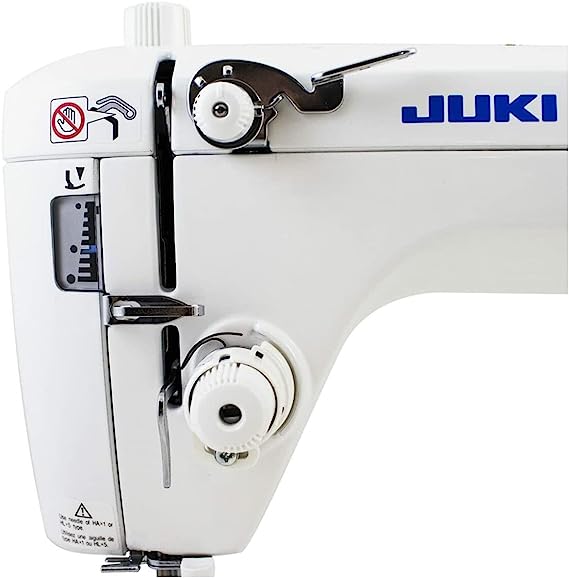
The Juki TL-2010Q quilting machine offers a Needle Up/Down function that allows sewists to control the position of the needle. While this feature provides convenience and precision, users must exercise caution to ensure optimal performance. Let’s explore the advantages and considerations of the Needle Up/Down function:
Advantages:
- Positional Control: Seamstresses can choose to have the needle stop in either the up or down position, facilitating fabric repositioning and pivoting. Users should remember to select the appropriate needle position to suit their specific sewing needs.
- Accurate Stitch Placement: The ability to program the needle to stop in the down position aids in precise corner stitching and securing stitches. Users must align the fabric correctly before commencing sewing to achieve accurate results.
- Quilting Efficiency: Seamlessly navigate intricate quilting designs with the Needle Up/Down function, ensuring minimal fabric movement. Care should be taken to avoid excessive pressure on the fabric to prevent distortion or puckering.
- Appliqué Assistance: Precisely appliqué fabrics by keeping the needle in the down position for seamless pivoting and smooth turns. Users must ensure the fabric layers are properly aligned to avoid misalignment or bunching.
- Seam Protection: By keeping the needle in the up position, users can safeguard their work and prevent accidental fabric shifting during repositioning. Users should exercise caution when manually turning the fabric to avoid needle breakage or fabric damage.
- Thread Tension Control: Pausing with the needle down allows for tension adjustments and reduces the chances of thread tangling or puckering. Users should take note of the thread tension when utilizing this function for consistent stitch quality.
- Stitch Reinforcement: With the needle set to stop in the down position, users can reinforce stitches at the beginning and end of seams for added durability. Users must ensure the fabric is flat and positioned correctly to avoid skipped stitches.
- Quilter’s Flexibility: The option to select the needle position provides quilters with greater control over their sewing projects. Users should consider their quilting style and adjust the needle position accordingly for optimal results.
Considerations:
- Needle Height: Users should be mindful of the needle height when switching between the up and down positions to avoid accidental contact with the machine’s components.
- Fabric Thickness: Care should be taken when using the Needle Up/Down function on thicker fabrics to prevent needle breakage or damage.
While the Needle Up/Down function of the Juki TL-2010Q offers valuable benefits in terms of seam control and precision stitching, users must be cautious of needle height adjustments and fabric thickness. By understanding these considerations and using the feature judiciously, sewists can enhance their quilting experience and achieve remarkable results.
Sewists who have tested the Juki TL-2010Q’s Needle Up/Down function have praised its ability to provide precise stitch placement, efficient quilting, and improved seam reinforcement. However, they highlight the importance of being mindful of needle height adjustments and fabric thickness to prevent any potential issues.
By leveraging the Needle Up/Down function effectively and being mindful of the necessary precautions, users can elevate their quilting projects and experience enhanced control and precision in their sewing endeavors.
Seamless Quilting: Exploring the Drop Feed for Free-Motion Quilting of Juki TL-2010Q
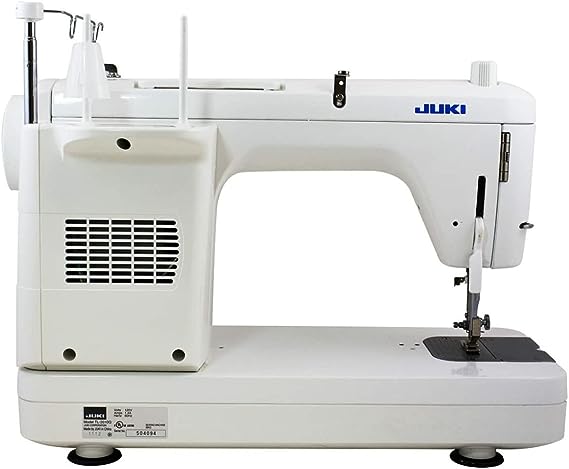
The Juki TL-2010Q quilting machine offers a Drop Feed feature specifically designed for free-motion quilting. This feature allows sewists to create intricate quilting designs with ease. While the Drop Feed feature provides numerous advantages, users need to exercise caution and make necessary adjustments to maximize its functionality. Let’s delve into the advantages and considerations of the Drop Feed feature:
Advantages:
- Free-Motion Freedom: The Drop Feed feature enables sewists to freely move the fabric in any direction, unleashing their creativity in free-motion quilting. Nevertheless, users should practice controlling the fabric movement to avoid tangling or bunching.
- Versatile Stitching: Quilters can create beautiful stippling, meandering, and other free-motion designs effortlessly. That said, users need to experiment with different stitch lengths and patterns to achieve desired results.
- Customized Quilting: The ability to control the fabric’s movement allows for customized quilting patterns and unique artistic expressions. However, users should start with simpler designs and gradually progress to more complex ones.
- Quilting Accuracy: With practice, users can achieve precise stitching lines and intricate details in their quilt designs. That being said, users should maintain a steady hand and practice maintaining consistent stitch length.
- Easy Fabric Manipulation: The Drop Feed feature ensures smooth fabric movement, making it easier to maneuver complex designs. Still, users should ensure proper fabric tension and avoid pulling or stretching the fabric excessively.
- Quilting Flexibility: Users can experiment with various quilting styles, including stippling, feathers, and geometric patterns. It is important for users to adjust their machine’s speed and stitch length to match the desired quilting style.
- Continuous Quilting: The Drop Feed feature enables continuous quilting without the need to stop and reposition the fabric frequently. Nonetheless, users should monitor fabric tension and ensure smooth fabric feeding to avoid puckering or uneven stitches.
- Quilt Embellishments: Sewists can add beautiful embellishments such as thread painting and decorative stitching to their quilts. However, users should select appropriate needle types and threads for different embellishment techniques.
Considerations:
- Practice and Skill: Users must practice and develop their free-motion quilting skills to fully utilize the Drop Feed feature’s potential. Regular practice is key to improving control and achieving desired results.
- Fabric Tension: Proper tension adjustment is crucial to prevent puckering or loose stitches during free-motion quilting. Users should test and adjust their machine’s tension settings according to the fabric being used.
- Speed Control: Users should maintain a consistent speed and avoid rushing to achieve even stitching lines. Adjusting the machine’s speed based on the complexity of the quilting design is essential for optimal results.
Sewists who have tested the Drop Feed feature on the Juki TL-2010Q laud its ability to provide freedom and creativity in free-motion quilting. They emphasize the need for practice and skill development to master this technique successfully. Additionally, they recommend paying attention to fabric tension, speed control, and the selection of appropriate needle types and threads for desired embellishment techniques.
To sum up, the Drop Feed feature of the Juki TL-2010Q offers immense possibilities for free-motion quilting, enabling sewists to create unique and intricate designs. However, users should be mindful of the considerations mentioned above to ensure optimal results and avoid potential challenges. With practice and attention to detail, the Drop Feed feature can elevate the quilting experience for both novice and experienced sewists.
The LED Lighting Advantage of Juki TL-2010Q for Enhanced Visibility
The Juki TL-2010Q quilting machine features LED lighting designed to provide enhanced visibility during quilting. This built-in lighting offers numerous advantages for sewists, although some considerations should be taken into account for optimal functionality. Let’s explore the advantages and potential drawbacks of the LED lighting feature:
Advantages:
- Brilliant Illumination: The LED lighting ensures a bright and well-lit work area, allowing sewists to see every detail with clarity. However, users should avoid looking directly at the LED lights to prevent eye strain.
- Precise Stitching: The enhanced visibility enables users to achieve precise stitching lines and accurately follow quilting patterns. Users should still maintain proper focus and attention to detail for consistent results.
- Easy Thread Placement: The well-lit workspace makes it easier to thread the needle and load the bobbin accurately. Ensure that the machine is turned off when threading to prevent accidental injuries.
- Color Accuracy: The LED lights provide true color representation of fabrics, aiding in color matching and creating cohesive quilt designs. Sewists should be aware of potential shadows cast by the LED lights and adjust positioning accordingly.
- Reduced Eye Fatigue: The bright LED lighting helps to minimize eye strain during long quilting sessions. However, it is advisable to take regular breaks to rest the eyes and avoid overexertion.
- Seam Visibility: The clear illumination allows sewists to see the fabric edges and seams more easily, ensuring precise stitching alignment. New users should still exercise caution and maintain proper fabric handling techniques.
- Versatile Workspace: The LED lighting illuminates the entire work area, providing visibility across the sewing machine’s bed. Sewer should position the machine in a well-lit room for optimal lighting conditions.
Considerations:
- Heat Generation: LED lights can produce heat during prolonged use. Users should be mindful of the temperature and avoid touching the LED lights directly to prevent burns or discomfort.
- Potential Shadows: The position of the LED lights may cast shadows on the work area, affecting visibility in certain angles. Sewists should adjust their lighting and machine setup to minimize shadows and ensure even illumination.
Sewists who have tested the LED lighting feature on the Juki TL-2010Q appreciate the enhanced visibility it provides, particularly when working on intricate quilt designs. They emphasize the importance of proper eye care, taking breaks, and adjusting the machine’s position to optimize lighting conditions.
While the LED lighting offers significant advantages, it is important to consider the potential heat generation and shadows that may affect visibility. Users should be mindful of the lighting’s position and temperature, ensuring a comfortable and well-illuminated workspace.
In conclusion, the LED lighting feature of the Juki TL-2010Q enhances visibility and provides a well-lit workspace for quilting. By being mindful of the considerations mentioned above, sewists can make the most of this feature and enjoy an enhanced quilting experience.
Juki TL-2010Q: Take-Up Lever Guard for Safety
The Juki TL-2010Q quilting machine is equipped with a valuable safety feature: the thread take-up lever guard. This guard offers several advantages to enhance safety during quilting. However, it’s important to consider certain factors to ensure its optimal function. Let’s delve into the advantages and potential drawbacks of the thread take-up lever guard:
Advantages:
- Injury Prevention: The guard prevents accidental contact with the moving thread take-up lever, reducing the risk of injuries. However, caution is still necessary to avoid other potential machine hazards.
- Enhanced Safety: The guard adds an extra layer of protection, providing peace of mind while quilting. Regular maintenance and proper machine usage are essential for continued safety.
- User-Friendly Design: The guard is seamlessly integrated into the machine’s construction, ensuring ease of use. Familiarize yourself with the guard’s placement and functionality for efficient quilting.
- Visual Clarity: The transparent design of the guard allows for clear visibility of the thread and take-up lever, facilitating better monitoring and control.
- Noise Reduction: The guard helps minimize noise generated by the thread take-up lever’s movement, creating a quieter quilting environment.
- Durability: The robust construction of the guard ensures long-lasting protection. However, regular inspection and maintenance are necessary to maintain its effectiveness.
- Compatibility: The thread take-up lever guard is specifically designed for the Juki TL-2010Q, ensuring a secure fit and optimal safety performance.
Considerations:
- Proper Installation: Carefully follow the manufacturer’s instructions for installing the thread take-up lever guard to ensure it is securely in place.
- Restricted Visibility: While the guard provides safety, it may slightly obstruct the view of the thread path. Adjusting the machine position and using proper lighting can mitigate this issue.
Quilting enthusiasts who have tested the thread take-up lever guard on the Juki TL-2010Q appreciate its contribution to safety and injury prevention. They highlight the importance of proper installation and regular maintenance to ensure the guard’s effectiveness throughout quilting projects.
While the thread take-up lever guard significantly enhances safety, it’s essential to be mindful of its potential limitations. Proper installation and periodic inspection are necessary to ensure it remains secure and functions optimally.
In summary, the thread take-up lever guard on the Juki TL-2010Q provides valuable safety benefits, reducing the risk of accidents during quilting. By taking into account the considerations mentioned above, quilters can maximize the advantages of this safety feature and enjoy a worry-free quilting experience.
And finally, why should someone consider the Juki TL-2010Q?
CHECK LATEST PRICE ON AMAZON
The Juki TL-2010Q is a highly recommended choice for quilting enthusiasts. Its outstanding features, including a large work area, even feed mechanism, and adjustable stitch length, provide excellent control and precision. Users have praised its durability, reliable performance, and smooth stitching results.
While it’s important to note that some users have experienced challenges with the thread tension and limited stitch options, these can be overcome with practice and experimentation.
The TL-2010Q offers incredible versatility for various quilting projects and allows for creativity to flourish. With its positive user ratings and numerous advantages, the Juki TL-2010Q is a worthwhile investment for dedicated quilters looking to elevate their craft.
